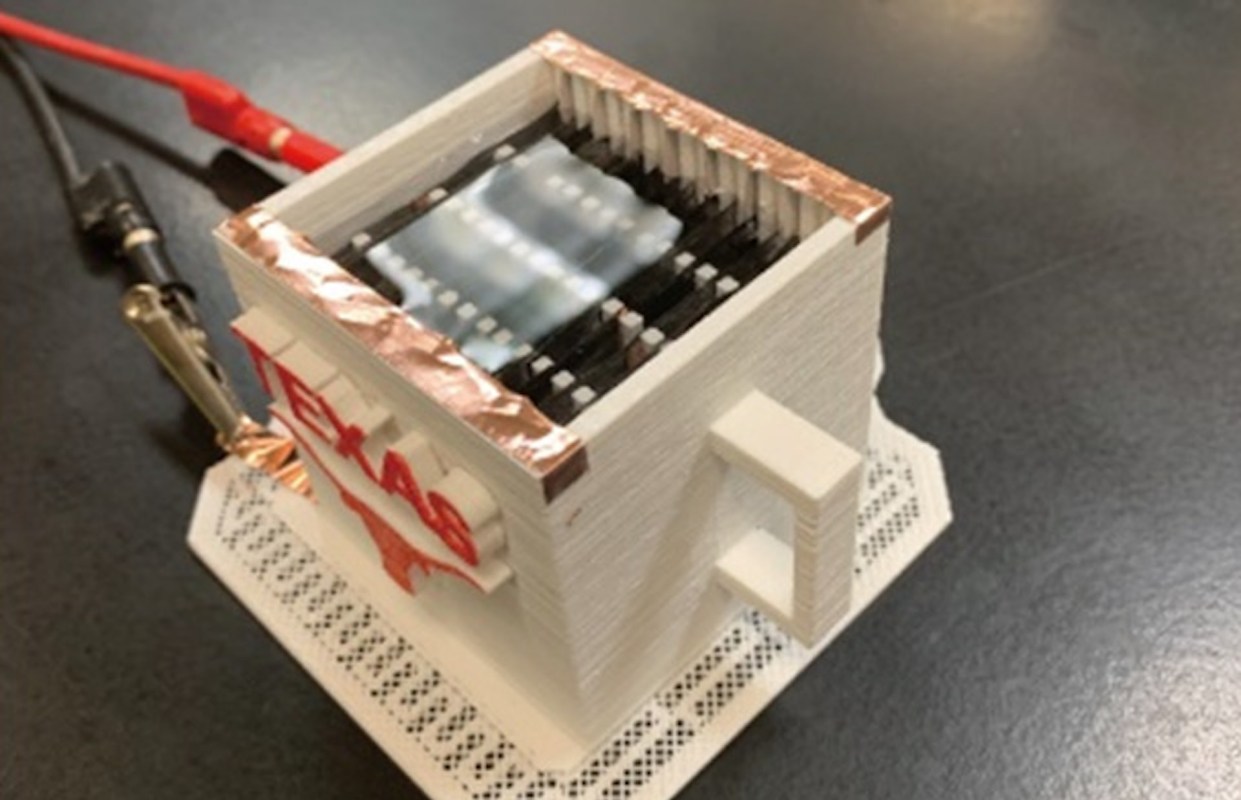A researcher at The University of Texas at Austin has developed a mug-sized device that can clean water using only a small jolt of electricity. The device could be used to help get drinking water to people left stranded by extreme weather events.
Dr. Donglei "Emma" Fan — an associate professor in the Walker Department of Mechanical Engineering at the Cockrell School of Engineering — along with her research team, was able to create the device using a specially designed "branched" electrode, now patented.
The electrode, when electrified, created a field that E. coli and other bacterial cells are attracted to, causing them to "swim" into the electrode branches. In lab experiments, the device successfully removed 99.997% of E. coli bacteria from water samples in just 20 minutes.
The as-of-yet unnamed device was referred to as a "strategically designed three-dimensional (3D) porous dendritic graphite foams (PDGFs) in a high-frequency AC field … integrated in a 3D-printed portable water-purification module" in the paper on the subject that Dr. Fan published in the scientific journal ACS Nano. Presumably, a catchier name is forthcoming.
"When our water infrastructure is down — no water, no gas, and no electricity — we need point-of-use devices for cleaning water we can get out of ponds, streams, or rivers," Dr. Fan said. "We believe our device can someday fill that need."
The device has advantages over other portable water-purification devices, as it requires only a small amount of electricity to work.
This device is not the only one to come out of The University of Texas at Austin recently — another research team just announced that they had also developed a device that could provide clean drinking water to places in need, by pulling it out of thin air. Their device uses a "molecularly engineered hydrogel" to pull moisture out of the atmosphere, using energy from the sun.
Join our free newsletter for weekly updates on the coolest innovations improving our lives and saving our planet.









